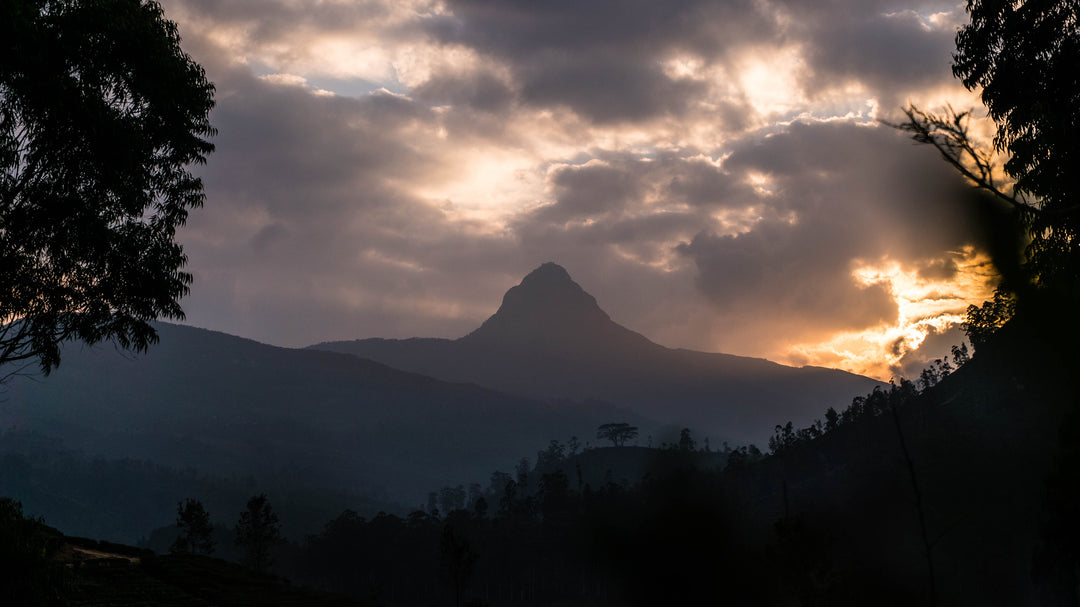A Field Guide to Ceylon Tea: Ruhuna – Bold Teas from the Southern Plains of Sri Lanka
Next in our series looking at tea regions is the large principality of Ruhuna which was founded around 200 BC and is situated in the southern and eastern regions of Sri Lanka. Its geography is low-lying compared to other important tea areas, and it was the last to be cultivated.
Ruhuna is made up of multiple districts. The most southerly of these is Galle & Matara where tea is grown at sea level. The region stretches across the south of the island all the way up to fringes of the Sinharaja in Deniyaya.
Driving through this region is different to driving through the up country districts of Dimbula & Dick oya.
Tea is grown by small individual families known as small holders and their plots of land vary greatly from a few tea bushes to a few acres. So, seeing endless fields of tea is not a common site. However, seeing tea intercropped between coconut trees, cinnamon and paddy fields is common and it takes a keen eye to spot the tea, when travelling through.
All this combined with the hotter more humid climate the soil conditions and the more intense hours of sunshine produce some very different flavours from southern planting districts, These are different from the “Ceylon” flavour that many drinkers will be accustomed to from the high grown regions.
 A small holder family growing tea on the hill.
A small holder family growing tea on the hill.
Tea leaves grown in the south will be picked by members of the family and will be sold to a tea factory for further processing. This is very different to the high grown plantations where estates have resident labour forces.
Tea factories in the south are privately owned and they work directly with small farmers to buy their leaf. Competition in the south for freshly plucked leaf is fierce with factories keen to not only have quality but quantity of leaf, thus farmers are paid a premium. For factories wanting to produce only the very best tea, they are known to pay almost a ⅓ more for quality green leaf.
The relationship between factory owners and their leaf supplies runs deep. I have known leaf suppliers to write into the wills that the leaf from their tea bushes will continue to be sold to a certain factory and its owner even after their death.
Ruhuna tea factories produce orthodox teas and will produce in excess of 20 grades of tea. Each grade of tea will carry a signature flavour from that particular factory but will be unique as it is produced from a particular part of the tea leaf.
Ruhuna and its low grown neighbouring region Sabaragumuwa produce 55% of Sri Lanka’s total tea production. Quite a feat when you think that this is all produced by small individual tea growers.
This year we will be adding more teas from this exciting region, with a variety of leaf styles. The overall character of Ruhuna teas are that of thick, strong full bodied flavours liquors will vary from honey to dark chocolate with many cups having a brisk “malty” note to them.
There is nothing better to try from Ruhuna now than Lumbini’s Sinharaja Wiry Tips. This tea won gold at 2023 Leafies tea competition held in conjunction with Fortnum and Mason.
The tea is medium bodied, best enjoyed without milk and has Lumbini’s signature honey flavour.
 Tea grown amongst coconut, rice paddy & spices.
Tea grown amongst coconut, rice paddy & spices.
For those of you who have all ready tried the Inverness from Nuwara eliya and the St Andrews from Dimbula. Then make sure you try Berubeula, this orange pekoe leaf offers tasters a great comparison of how the lower elevation and soil change the taste and flavour.
You can see something about all of the regions here.




